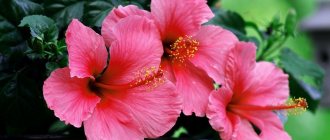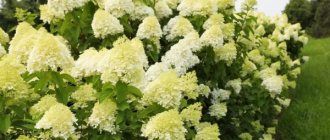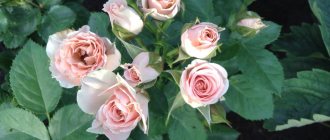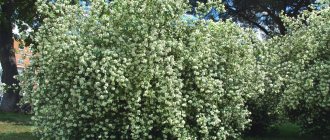One of the most interesting garden perennials with decorative flowers and leaves is black cohosh. It reaches a height of 1.5-2 meters and has a wild, somewhat forest-like appearance. The plant will decorate slightly shady corners of the garden, valued for its low requirements and decorative qualities. Find out how to grow black cohosh - planting and care in open ground, how to propagate it and what it can be used for.
Description of the plant
Black cohosh (Actaea) is a perennial herbaceous plant, includes several species, belongs to the Ranunculaceae family. The plant is also known by the names - red crow, black cohosh. Black cohosh from the genus Cimicifuga has recently been transferred to the genus Actaea. But the old name Cimicifuga is better known.
The word "Cimicifuga" means fleas or bedbugs. However, this species has nothing in common with these insects, except for a not very pleasant smell. However, it is a very attractive plant that will make a wonderful addition to any garden.
Botanical description:
- The black cohosh plant has straight shoots, is bushy, and grows in dense bunches. The height can reach 1.5-2 meters. Sometimes the shoots develop strongly and branch.
- The leaves are trifoliate, deeply dissected, intensely green, often yellow in autumn, 10-12 cm long, smooth, shiny.
- The root is a brown, fleshy rhizome, usually reaching 2.5 centimeters in diameter and 15 cm in length. Has many branches. The roots are dark brown in color, with a maximum diameter of up to three millimeters.
- Flowers. Slender serpentine clusters of almost white, small, individual flowers rise above the foliage. These brushes come in different thicknesses and lengths. The longest racemes can reach 70 cm. Flowers of several species emit a not very pleasant smell, hence the name black cohosh.
- Fruit. After flowering, attractive fruits 5-10 mm long, containing about 10 seeds, are visible on the stem. In winter, the fruit makes a crackling sound when exposed to wind.
Flowers are the most interesting element of the plant. Very small, consisting of thin petals, collected in an attractive spike. They do not develop simultaneously; they create the effect of a burning candle. The plant has white or purple flowers.
The flowering period of black cohosh is June-September. When black cohosh blooms, its flowers do not bloom at the same time, which gives the effect of continuous flowering until the end of September.
Silver candle or black cohosh - a spectacular perennial for shady places
Black cohosh is a flowering perennial of the Ranunculaceae family; among gardeners the more common name is “black cohosh.” A decoction of the roots of the culture has the beneficial property of repelling insects and pests. Meanwhile, behind the nondescript, even repulsive name, a beautiful plant is hidden. In German there is a more romantic name - “silver candles”, which describes the graceful fluffy inflorescences of a silver-white color. Black cohosh is well suited as a decorative decoration for shady, damp areas of the site.
Popular varieties and types - photo with name, description
Racemose
The black cohosh species (Cimicifuga racemosa) reaches a height of 2 meters. The plant is native to North America. Leaves are trifoliate. The inflorescences are slightly curved in the form of a small arc, reaching a length of 50-60 cm. The variety blooms from late July to early September.
Interesting varieties:
- Variety "Armleuchter" Armleuchter is a very beautiful autumn flower, 150-160 cm high, with branched inflorescences, flowering begins in September and continues until frost.
- “Blickfang” BS Blickfang is an old variety, highly valued for its snow-white flowers that attract attention, blooms in September.
- “Black Negligee” is a variety of black cohosh Black Negligee with long (35 cm), snow-white inflorescences. The Black Negligee variety is additionally distinguished by its beautiful dark purple leaf color, which, in combination with beautiful inflorescences, gives an extraordinary effect.
- Black cohosh "Silver Dance" Silver Dance is one of the most famous varieties of this beautiful flowering tall plant. Its clusters can grow on one stem up to 1 m in height. Tiny creamy white flowers gradually develop. Blooms from July to October. The plant loves shaded areas and constantly damp places. Can withstand even deep shade.
- Black cohosh “Black Beauty” is a unique variety of Black Beauty with large purple leaves, grows in lush bushes, above which rise pale pink, fragrant inflorescences 30-35 cm long. The height of the plant, depending on growing conditions, is up to 200 cm. It is characterized by an unusual dark purple color of the leaves, which in combination with bright inflorescences gives an interesting color contrast, blooms from September to October. Can grow in partial shade or even shade.
Cordifolia
A subspecies of black cohosh is the heartleaf (Cimicifuga racemosa var. Cordifolia) of North American origin. Reaches a height of 150-170 cm. Flowering shoots are straight, almost unbranched. Compared to other species, it feels better in sunny areas and allows some drying out of the soil. Flowers appear in mid-summer, they are collected in numerous spikes. There are many flowers and they are very small, creamy.
Daursky
Daurian cohosh or black cohosh (Cimicifuga dahurica) - found in the territories of Eastern Siberia, China, and Japan. The stems are 1-1.5 m high. White, small flowers with a slightly unpleasant odor are collected in broom-shaped inflorescences. Flowering period: August – September. The leaves are quite similar to the species C. racemosa, only the roots are more heart-shaped.
An alcohol tincture is prepared on the rhizomes of this species. In folk medicine in Eastern Siberia, this tincture is used to treat hypertension.
Branched
Black cohosh (Cimicifuga ramosa) is a plant with a straight, heavily leafy stem. It has a powerfully developed and deep rhizome. Leaves are pubescent. It easily grows to a height of 2 m. The inflorescences are quite dense, long, and can reach 60 cm. The flowers are creamy white, highly fragrant. Blooms in August-September. Plant sap does not smell very pleasant.
The branched black cohosh variety "Atropurpurea" Atropurpurea differs in the color of its leaves. They are initially reddish-brown in young plants, then turn green. Atropurpurea forms a showy, dense bush 180-200 cm high, producing arched white inflorescences in summer.
Simple
Black cohosh or black cohosh (Cimicifuga simplex) is the lowest species, reaches 1-1.4 m and blooms later, in late September - October. Several varieties of this species are worth recommending for cultivation:
- "White Pearl" White Pearl.
- 'Braunlaub' Braunlaub has dark green leaves with a slight brownish tint.
- “Brunette” Brunette is a variety of black cohosh with dark leaves.
- "Pink Spike" - black cohosh variety Pink Spike is a perennial plant with an interesting appearance. Grows up to 120-150 cm in height, forming compact spreading bushes. The purple-brown feathery leaves contrast wonderfully with the tiny fluffy pale pink flowers. The flowers are collected in dense cylindrical clusters and appear on the tops of hard shoots from July to September.
Brief summary
The black cohosh plant has only recently been grown in our climate zone, but it immediately began to enjoy its popularity. Because it not only drives away pests, but also has medicinal properties.
- Common goldenrod - healing properties, medicinal qualities, indications and contraindications for the use of goldenrod (120 photos)
- Lyubka bifolia - medicinal properties and the best recipes from traditional medicine (110 photos)
- Jaundice - description of the plant, medicinal properties and features of use in folk medicine (80 photos)
What types of this plant are there, its benefits, how to plant it and care for it, we discussed in this article.
Landing
Before you buy a plant, you need to think carefully about where to plant it, because black cohosh hates transplanting. After it, it may not bloom for 2-3 years.
How to buy a good seedling?
When buying seedlings, choose ones whose roots have not yet outgrown the pot. This will affect the speed with which the plant takes root in a new location. The seedling must be healthy, the leaves must not be dried out.
Selecting a location
In order for the plant to reveal its beauty, not to get sick and to take root faster, it is important to know where to plant black cohosh. It grows worse in deep shade. Black cohosh grows best in cool, slightly shaded areas. Like most shade-tolerant plants, they need some (4-5 hours) sun. Early sunshine is best because mornings are coldest.
Autumn-blooming varieties need to find secluded places where autumn frosts are not a threat. Colored varieties need more light. Varieties with variegated leaves are preferable to plant in a place not exposed to strong sunlight (due to the possibility of burns).
Full sun, scorching all day long, causes the plant to wither and die. In sunny areas, it is worth planting ground cover plants around it, covering the lower part of the black cohosh so that it is well shaded.
When choosing a location, you should take into account the significant height of the plant and take care of a position protected from very strong winds to avoid breakage of the shoots. Black cohosh grows well near trees, among conifers and is suitable for covering a bare wall facing north. An excellent plant for decorating dark corners of the garden.
Soil requirements
Black cohosh require constantly moist, fertile soil with a pH of 5-6. Moreover, due to the structure of the roots, we are not talking about the surface of the earth being wet. The soil should be slightly moist within reach of the roots. This is where some misunderstanding arises.
Light sandy soils should not be dry. However, if the groundwater level is within a meter below the surface, then recharging the soil with water from below will allow the plant in such areas to grow well in shallow shade.
If sandy soil is systematically fertilized with humus or at least with the annual addition of compost soil, which allows water to be bound together with nutrients, then the roots of the plants will receive the necessary nutrition and this position, even in bright sunlight, will be suitable for the plant with moderate watering. This does not mean that the plant needs to be planted in full sun.
To determine the needs of a plant, you need to know the conditions under which it grows in nature. Black cohosh is native to cool climate regions and forested areas. If we go into the forest, we will see that the forest soil is, firstly:
- permeable;
- quite loose;
- has a high content of organic matter or humus;
- always quite damp, but not wet.
Knowing this, choose a suitable place in the garden. It often happens that we do not have an optimal position. This means you need to put in a little effort to prepare the ground. Any soil should be well fertilized with compost, the clay should be loosened with gravel (sand on highly clayey soils may be an insufficient loosening agent).
The substrate must also be sufficiently airy, since the root needs access to air.
Landing
Black cohosh planting scheme: 5 plants are planted per 1 sq.m.
Planting time: black cohosh seedlings grown in pots can be planted in the garden from spring to late autumn. They are easily accepted and do not cause problems.
The root system of black cohosh is quite powerful, so it is necessary to make a deep drainage layer (at least 20 cm) on the clay. On clay soils, dig a very deep hole. All soil from the hole is mixed with compost and mineral fertilizers. A 20 cm drainage layer is poured onto the bottom and covered with approximately a 20 cm layer of soil mixture.
In sandy soils, the hole may be smaller but deeper than normal for many plants. In this case, pour a thick layer of soil mixture from garden soil with compost onto the bottom.
Then we place the seedlings and fill the roots with the rest of the mixture. If the plant is planted in an area with a lot of sun, make a hole around the plant for watering.
How to choose the right variety
The choice of variety begins with determining the appropriate species. Characteristic features are taken into account: frost resistance, soil quality, shade tolerance or love for plenty of light, bush size. If black cohosh is chosen for single planting, preference is given to powerful bushes with a height of 1 to 2 m. The borders are decorated with low-growing plants with a height of 40 cm or more. If the variety easily tolerates moisture, the bushes can be planted near a pond in the yard.
Black cohosh plantings are often combined with thujas. If the crop will grow with other ornamental plants, they should all be adapted to the same growing conditions.
You can learn more about black cohosh from the video:
Growing and care
Black cohosh is not difficult to grow; it is quite unpretentious. This is a plant for the patient gardener. During the first 2-3 years of cultivation, it grows rather slowly and blooms poorly, directing all its energy to the growth of underground rhizomes. After this period, the plant pleases with abundant flowering and a generous accumulation of leaves.
Tall black cohosh are prone to lodging. Therefore, it is worth taking care of aesthetic supports.
To extend the flowering time of black cohosh, it is worth regularly removing fading flowers. Then we will prevent the seeds from setting, which will force the plant to continue flowering.
Watering
Black cohosh does not like excessive drought, and during the period of bud formation, lack of water can lead to the death of the plant. In principle, the most important thing in caring for black cohosh is to water it, preferably as often as possible, but in small portions. The plant needs water every day, the substrate must be constantly moist, and preferably at a constant level.
On the hottest days you need to water it daily.
You also need to regularly remove weeds around the plant, they can take away water and nutrients.
Fertilizer
Every spring, it is advisable to feed black cohosh with a layer of compost, mixing it with soil. You can feed plants with multicomponent mineral preparations. Natural remedies, such as humic fertilizers made from California earthworms, also work well.
Pruning, preparing for winter
Many gardeners ask whether black cohosh needs to be pruned for the winter and how to prepare it for winter. The plant begins to turn yellow at the end of October, dries out in November and goes into a dormant state. The perennial overwinters in the ground as dark rhizomes, from which it regrows again in the spring. In autumn, the leaves do not need to be removed; they are laid on the ground and are an excellent shelter from frost. You can cut the shoots in the fall at palm height above the ground.
Since young shoots are sensitive to early spring frosts, it is better to cover the ground with at least compost so that it does not warm up from the spring sun. Then the shoots will not be so hasty.
The plant is completely frost-resistant. Therefore, no problems will arise when planting and caring for black cohosh in open ground in the Moscow region and central Russia. But it is better to cover the ground around with mulch, first of all, to delay germination, since young shoots are sensitive to spring frosts.
Spring care
In early spring, during the first cleaning in the garden, we remove dead above-ground parts remaining from last season. As a result, the young will have an easier path to growth.
The use of black cohosh in landscape design
The variety of black cohosh species in terms of height, length of inflorescences, and their color allows you to create many compositions in flower beds, alpine slides, and borders. Black cohosh in garden design can both create a bright accent and become a background for other plants.
When planting alone, you should choose tall, bright varieties: European or Daurian cohosh, atropurpurea. The same species are often used to decorate the banks of reservoirs and are grown along fences or walls. Medium-sized black cohosh looks good in prefabricated flower beds, and low-growing black cohosh decorates rock gardens, borders, and flower beds.
Black cohosh in landscape design, as seen in the photo, can be perfectly complemented by low-growing or cover crops. Hosta, maple leaf, anemone, perennial moss, and hoofed grass not only decoratively frame black cohosh plantings, but also serve as protection for the soil. Climbing lungwort and brunera perform a good mulching function.
Attention! It is important to select plant species for proximity to black cohosh that require similar growing conditions and thrive in moist, semi-shaded places.
Fern, aconite, sedge, buzulnik, and astilbe grow well next to black cohosh. Coniferous plants and bergenia serve as a noble background, highlighting the beauty of flowers and leaves.
Reproduction
Black cohosh reproduces by seeds and by dividing the bushes, which is somewhat laborious due to the deep root system.
By division
It is better to divide the bush on rainy, cool days. Since the plant does not like replanting, its roots do not tolerate damage and injury well, it is better to use the following method for propagation.
We separate a piece of bush directly in the ground with a sharp shovel and dig up only this fragment. With this method of dividing black cohosh, there is a high probability that the plant “will not be offended” and will bloom normally.
After trimming the seedling, it is good to sprinkle the wound with charcoal or add a layer of acidic peat. You can leave the plant for 1-2 hours to allow the wound to dry. Before dividing, it is better to prepare crushed coal in a flat container.
After planting the seedling, you need to ensure that the soil is always moist. Only when strong new growths appear can we consider that black cohosh has taken root and watering can be reduced. Even in fairly warm regions, it is always better to cover newly planted seedlings for the winter. Moreover, it is better to do this when the ground is already frozen, in order to protect against voles.
Seeds
Propagating black cohosh by sowing seeds is possible for the species and is a method for extremely patient gardeners. Seeds usually germinate within 12 months. Mature seeds should be sown directly into the soil in the fall for two reasons:
- they quickly lose their viability;
- they need stratification (freezing) to remove hormones that suppress embryonic growth.
Shoots will appear after a period of seed cooling, when the temperature is below 15 °C.
If seeds were purchased in winter, it is better to buy a growth stimulant. The seeds are exposed to a temperature of at least 15 degrees C for 6 weeks, then soaked in a growth stimulator and sown. Sown seeds are subjected to cold stratification for 8 weeks. There is a chance that they will germinate in the spring. After planting in their first winter, the seedlings should grow in cold greenhouses.
Contraindications
Black cohosh is not a toxic plant, no matter how long it is taken. This fact has been proven thanks to research conducted by scientists and the long history of using this plant as a remedy. Individual reaction and a number of contraindications may prevent you from taking it. The list of contraindications includes: pregnancy and lactation, age under three years, allergy to aspirin, strokes, thrombosis and convulsive activity. You should be careful when taking black cohosh together with medications that lower blood pressure and thin the blood, as it will enhance their effects.
When taking hormonal medications, you should also talk to your doctor before using them.
When taking black cohosh in powder form, it is important not to exceed the maximum single dose of 200 mg, and no more than one gram per day. Side effects may include: migraine; slow heart rate; constipation; dizziness; increased sweating; nausea; vomit; decreased vision.











